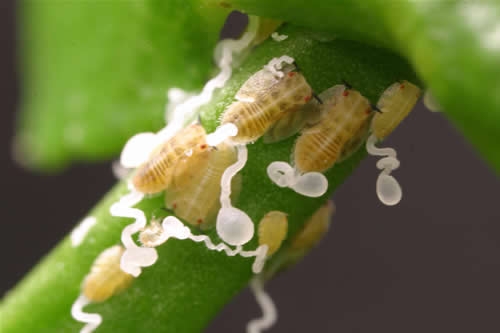Could CDFA’s ACP Control Policy Devastate Our Citrus Industry Like Florida’s?
Citrus Industry is Fired Up Over Softened ACP Control Policy
By Patrick Cavanaugh
It seems that CDFA officials are giving up on controlling the Asian Citrus Psyllid (ACP) in Central California citrus growing areas! It sure looks like it.
Ever since the May 12 ACP trappings in the Lindsay area of Tulare County, there has been a major back-step in what has been an aggressive mandatory spray program to control any possible live psyllids within an 800-meter radius around the trap.
Now CDFA is suggesting that the spray programs should be voluntary and only 400 feet around the trap find.
According to Joel Nelsen, president of the Exeter-based California Citrus Mutual, “The conversation relative to the change in eradicating or treating for the ACP came about with a discussion between a few members of the scientific community and the department.”
“Frankly, the industry was unaware of this possible change in the program. When it was first released to the AG commissioner, it shocked everybody–is my understanding,” Nelsen said.
“And as a result, last Friday afternoon, the executive committee members from our pest and disease management committee had a very direct conversation with senior leadership of the CDFA. I understand that the conversation was extremely candid, somewhat emotional; if the industry to is going to be supporting a program to the tune of 15 million dollars, they want a say in how the program is run. And evidently, the Department of Agriculture is making some subjective decisions that we don’t believe are appropriate.”
“From my perspective, there were mistakes made at the onset of this program that we had to learn from; and if we don’t take seriously—psyllid control, psyllid control, psyllid control!—we’re going to end up in the same type of quandary that our colleagues in Florida, Texas, Mexico and even Brazil are in.
Too many psyllids, an endemic population, some of which will contract citrus greening disease and eventually contaminate citrus trees, could devastate central California’s $2 Billion industry. “If we even allow one psyllid to continue to foster a population, then we have failed at our effort. And so from the perspective of Citrus Mutual, we are in an eradication mode,” Nelsen said.
“We are in a position in which we can find isolated psyllids and treat, and we are in position where continuous trapping and tapping (with bats and trays in searching for psyllids) and intensive trapping is not finding an endemic population. So for the department to argue that the population is endemic, its a ‘what if’ scenario that we don’t think is appropriate.”
Nelsen said that the pushback by his pest and disease management committee might have made a difference. “I haven’t received anything, but I think that conversation last Friday afternoon yielded some intended results. There’s a reconsideration, and I give a lot of credit to the industry members who stood up the department; but until it happens, its not real,” he said.




 Westlands Water District General Manager Thomas Birmingham issued the following statement on the drought bill passage:
Westlands Water District General Manager Thomas Birmingham issued the following statement on the drought bill passage:












